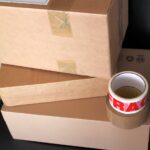New York City (NYC) has specific regulations for furniture disposal that can be challenging to navigate for homeowners, renters and business owners. If you’re looking to get rid of old furniture, understanding the city’s rules to avoid fines and manage your waste responsibly is your first step.
Below, we unpack the best way to dispose of unwanted furniture in NYC while remaining compliant with local laws and ensuring a smooth process.
How to Get Rid of Furniture in NYC: Legal Rules and Other Important Considerations
Improper furniture disposal in NYC can result in hefty fines of up to $400 and even create hazards for sanitation workers. These essential rules and procedures on how to get rid of furniture will help you avoid these penalties and ensure compliance.
Limit on Bulk Items
Residents are allowed to dispose of up to six bulk items per collection day. These large, heavy pieces must be placed on the curb or at designated pickup points between 6 PM and 12 AM to ensure a successful collection.
When leaving bulk items out for collection, location is everything. You need to make sure you keep them off the street, they’re not in front of another property, or obstructing pedestrian traffic. The Department of Sanitation New York (DSNY) will also not collect items left on private property.
Note that the DSNY has suspended pick-up appointments. If you plan to dispose of large quantities of furniture, strategically spread them over multiple collection days to guarantee collection.
Now that you know some legal aspects of furniture disposal, let’s explore how to sort your furniture properly.
Recycling vs. Trash: What Goes Where
NYC’s waste system sorts items into recyclables and regular trash to reduce landfill waste and manage hazardous materials — here’s what you can and cannot recycle:
Items Suitable for Recycling
You can only recycle large metal or rigid furniture and appliances in good condition as they can be repurposed into new raw materials. Such items include:
- Metal furniture (e.g., bedsprings, bed frames, clothes dryers, cabinets, etc.)
- Electrical appliances (e.g., dishwashers, ovens, paper shredders, washing machines, etc.)
Place your items in clear plastic bags or bins with blue sticker labels on the lid and both sides of the container to indicate that the recyclables are made of metal, glass, or plastic. You can obtain a copy of these stickers through the Department of Sanitation’s website.
After labeling, place the recyclables curbside between 6 pm and 12 am if they are in bins or between 8 pm and 12 am if they are in bags the evening before your scheduled pickup. You can check collection days by entering your address on the Department of Sanitation’s system.
If your scheduled collection day falls on a holiday, Sanitation will pick up your recyclables the following week.
Items to Be Disposed of With Regular Trash
On the other hand, large, mostly non-metal furniture items cannot be recycled and should be discarded with regular trash since they often contain mixed materials that are difficult to process. Items considered non-recyclable include:
- Barbeque grills that use charcoal or gas
- Couches or sofas with metal frames
- Furniture partially made of plastic (e.g., couches, tables, etc.)
- Glass table tops without frames
- Mattresses and box springs
- Mirrors without frames
- Non-recyclable patio furniture with cushions
Proper Packaging of Bulk Items
After sorting the items, package them properly to avoid hazards for sanitation workers. Cover sharp edges with bubble wrap, blankets, or cardboard, and secure loose parts like removable legs or shelves by bundling them together or attaching them to the main piece. This helps prevent transportation accidents, such as cuts and scratches from exposed sharp edges and damage to other items.
Getting Rid of Specific Items
Extra care must be taken for certain furniture pieces since improper handling can pose health risks to sanitation workers, the environment, and the general public. Such items include:
Mattresses and Box Springs
To prevent the spread of bed bugs to other items, seal infested mattresses and box springs in heavy-duty plastic and tape openings before disposal. Avoid using red and orange bags intended for hazardous waste, and use clear or green bags only if the items are recyclable.
The City does not provide these bags or covers, but you can purchase them at department stores, home improvement stores, and moving supply centers. Improper disposal of mattresses or box springs will result in non-collection and may incur a $100 fine.
If your bed includes a frame, disassemble it and bundle the pieces together, ensuring each bundle is no larger than 2×4 feet. Note that mostly plastic or metal bed frames should be sorted with recyclables, while wood frames should be discarded with regular trash.
Bed Bugs-Infested Furniture
If your furniture is infested with bed bugs, attach a sign indicating the infestation before putting it out for collection. This ensures sanitation workers take necessary precautions to contain these pests.
Electronics
Some electronics contain hazardous materials, including lead, mercury, arsenic and cadmium. You cannot dispose of these electronics via regular trash or recycling but through the city’s e-waste programs.
e-Waste items include:
- Computers and accessories (e.g., cables, cords, desktop towers, monitors, keyboards)
- TV and video equipment (e.g., cable boxes, satellite dishes, TVs, VCRs, DVD players)
- Portable electronic devices (e.g., cell phones, digital cameras, tablets, digital music players)
- Home electronics (e.g., electronic keyboards, fax machines, video game consoles)
Use designated e-waste disposal services to ensure these items are handled safely and responsibly.
CFC and Freon-Containing Appliances
If you need to dispose of a refrigerator, air conditioner, dehumidifier, water cooler, or any other appliance containing chlorofluorocarbon (CFC) gas, complete this form to schedule a removal appointment with the DSNY.
CFC, or Freon, is commonly found in cooling and refrigeration appliances. Proper handling of these items is necessary to prevent the release of harmful gasses that can damage the environment.
Before the scheduled appointment, the DSNY will remove the CFC from the appliance to be safely recycled.
Alternative NYC Furniture Disposal Options
Besides regular curbside collection, residents in New York can also make use of alternative furniture disposal options, such as:
- Donating items in good condition: Help those in need and prevent these items from ending up in landfills by donating to local charities or organizations such as The Salvation Army or Goodwill.
- Use online marketplaces: Consider selling your old furniture on platforms like Craigslist or Facebook Marketplace to earn extra cash on your unwanted goods.
- Repurpose or upcycle furniture: Get creative and find new ways to use your unwanted furniture, such as turning an old dresser into a TV stand or repurposing chairs into plant holders.
- Hire a junk removal service: Businesses can arrange waste collection with a private carter or get a “Self-Hauler” registration from the Business Integrity Commission, while homeowners can schedule pick-ups with BIC-licensed disposal services.
Make Moving a Breeze with Liberty Moving
Moving is stressful enough for businesses and homeowners. Liberty Moving & Storage is here to simplify the process. We provide swift and reliable furniture disposal so you can avoid the hassle of navigating NYC’s strict regulations and focus on your move.
Our movers will disassemble, pack, and transport your furniture for you while ensuring proper disposal of items that cannot be recycled or donated. Contact us at 1-800-640-4487 or fill out our form for a free, no-obligation quote.



